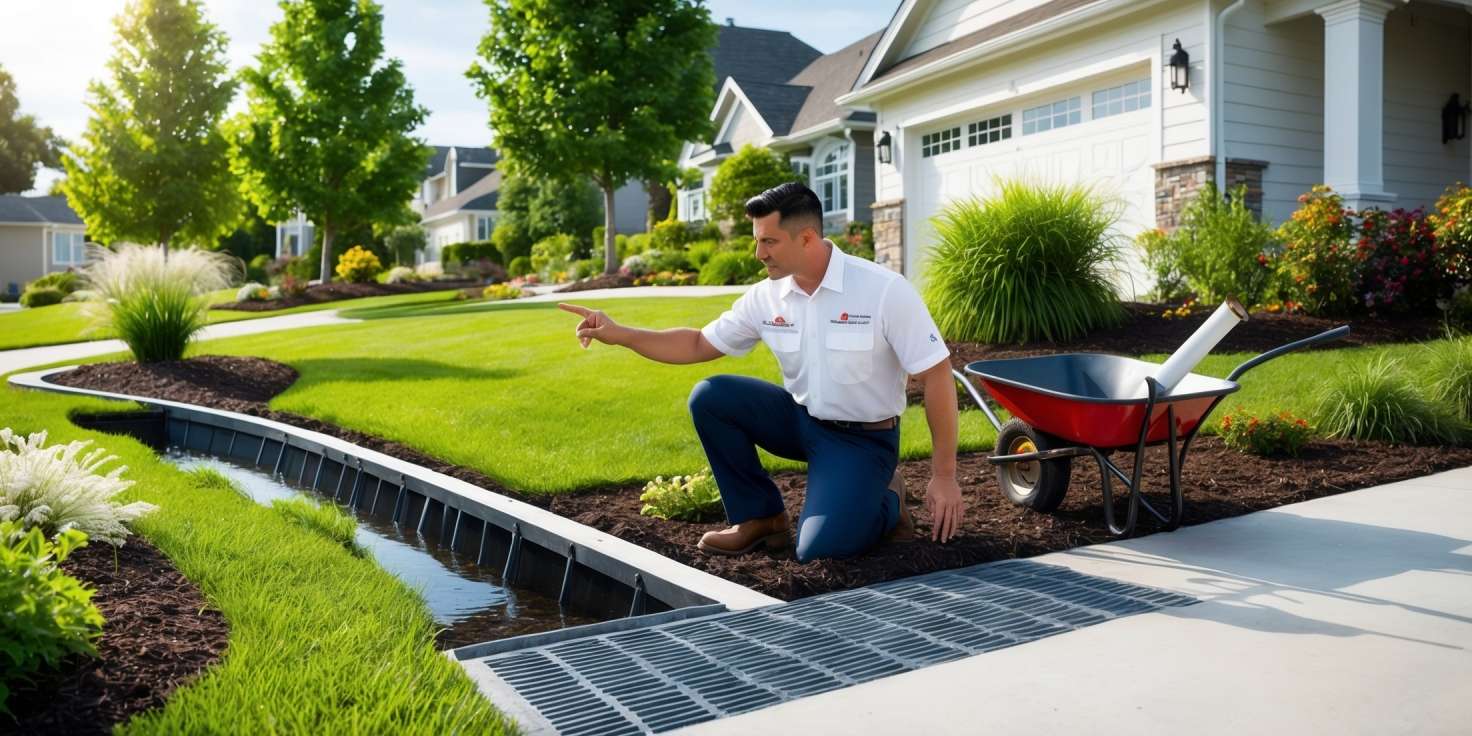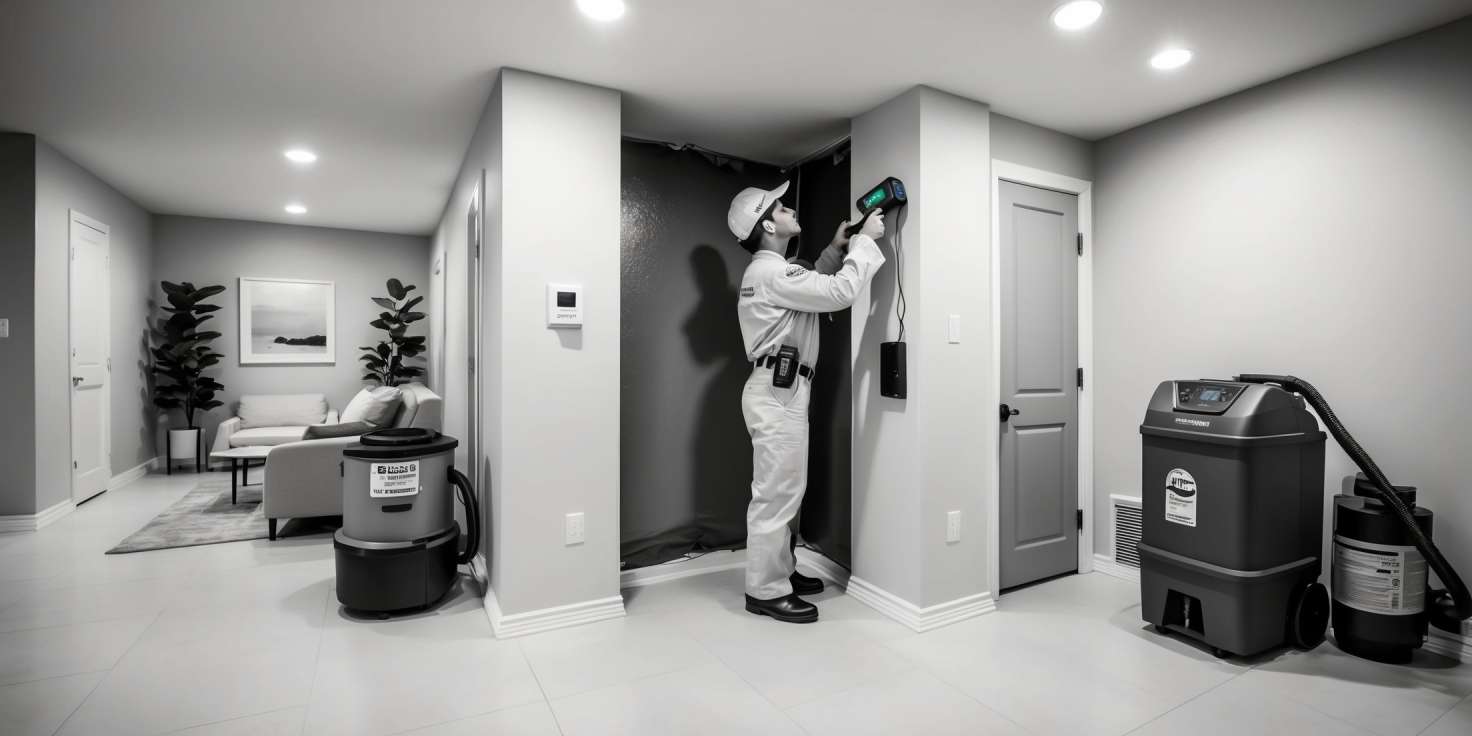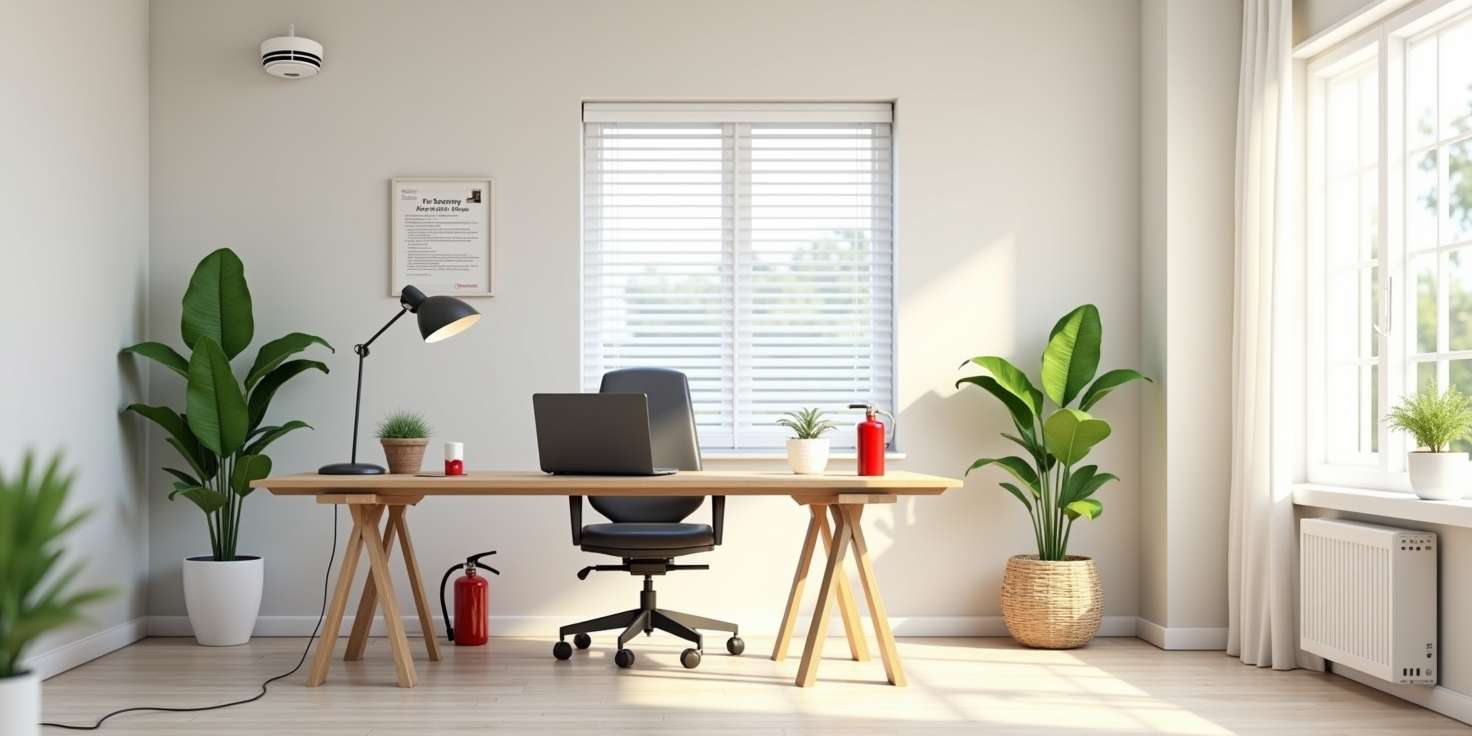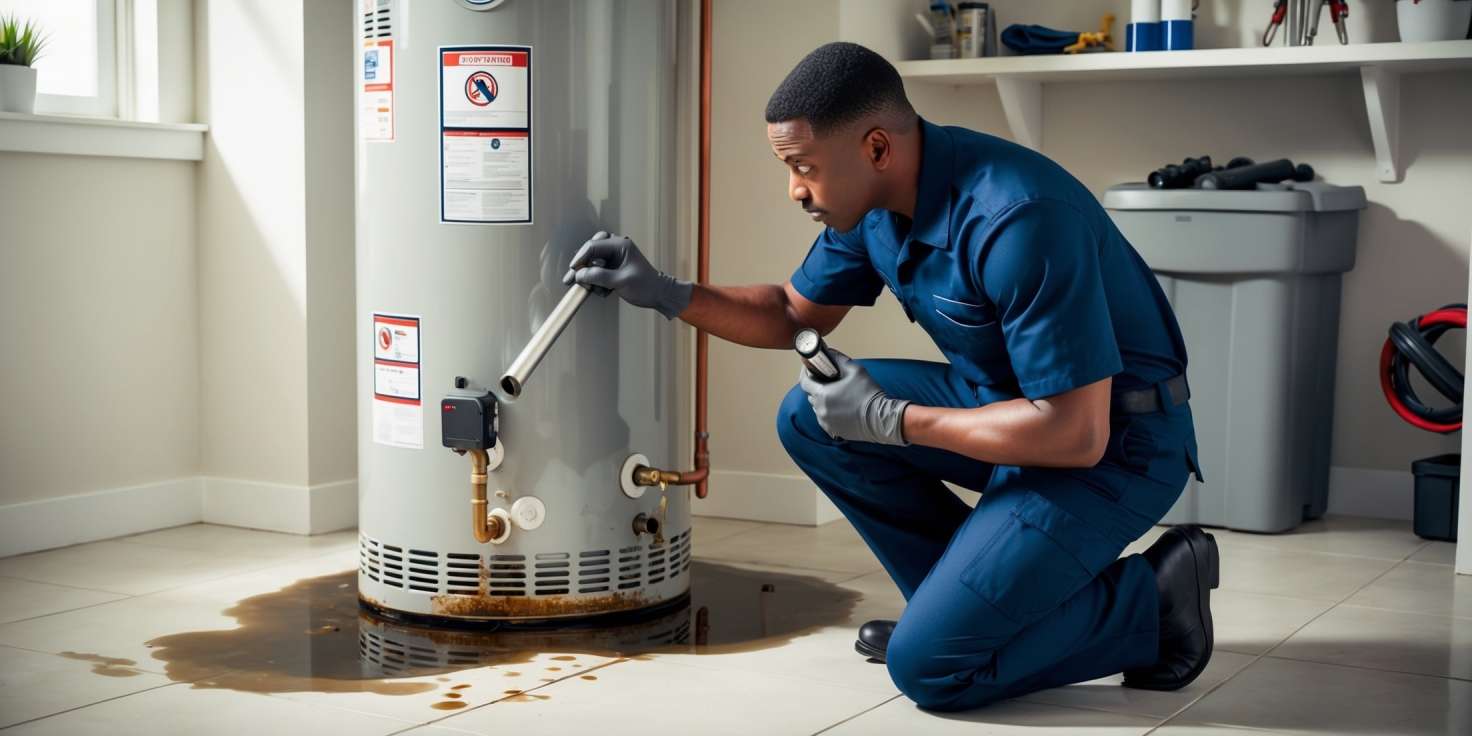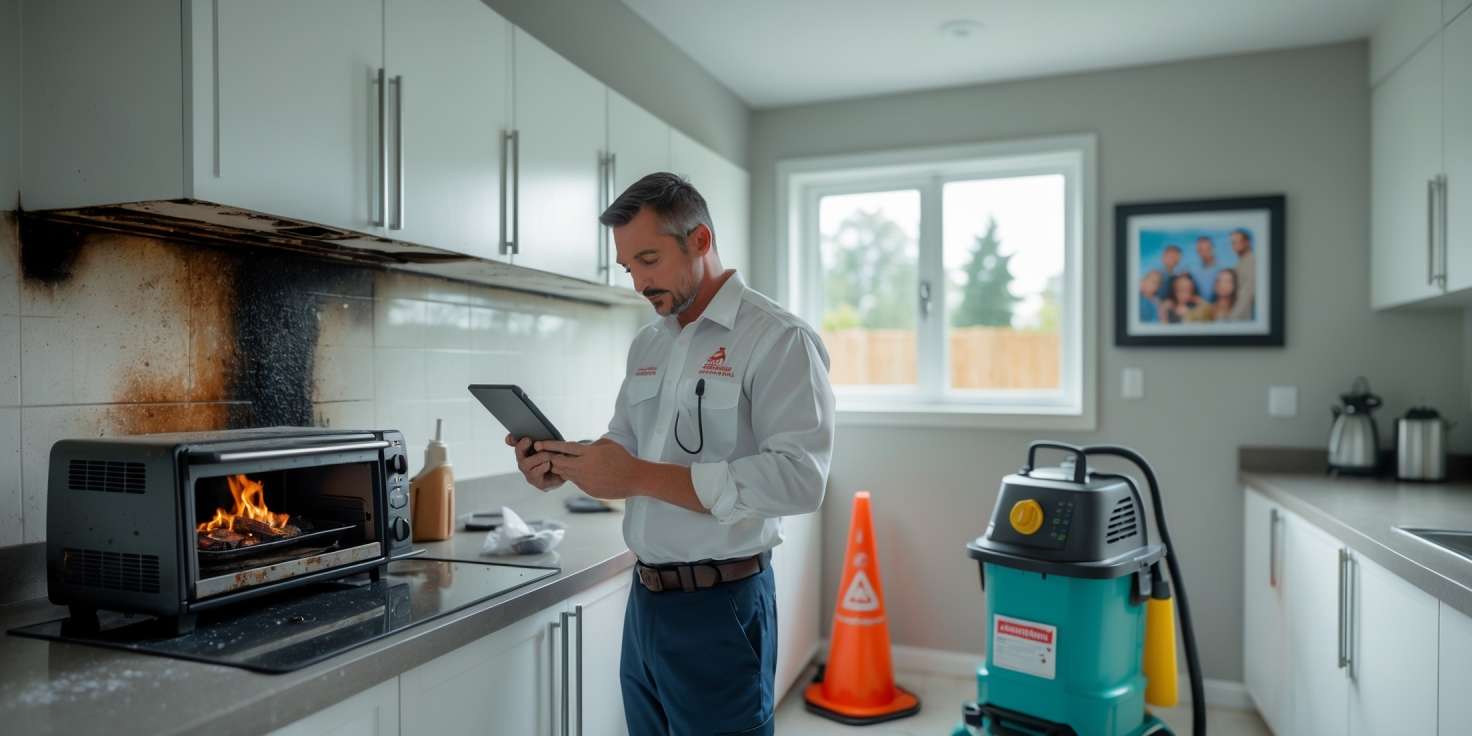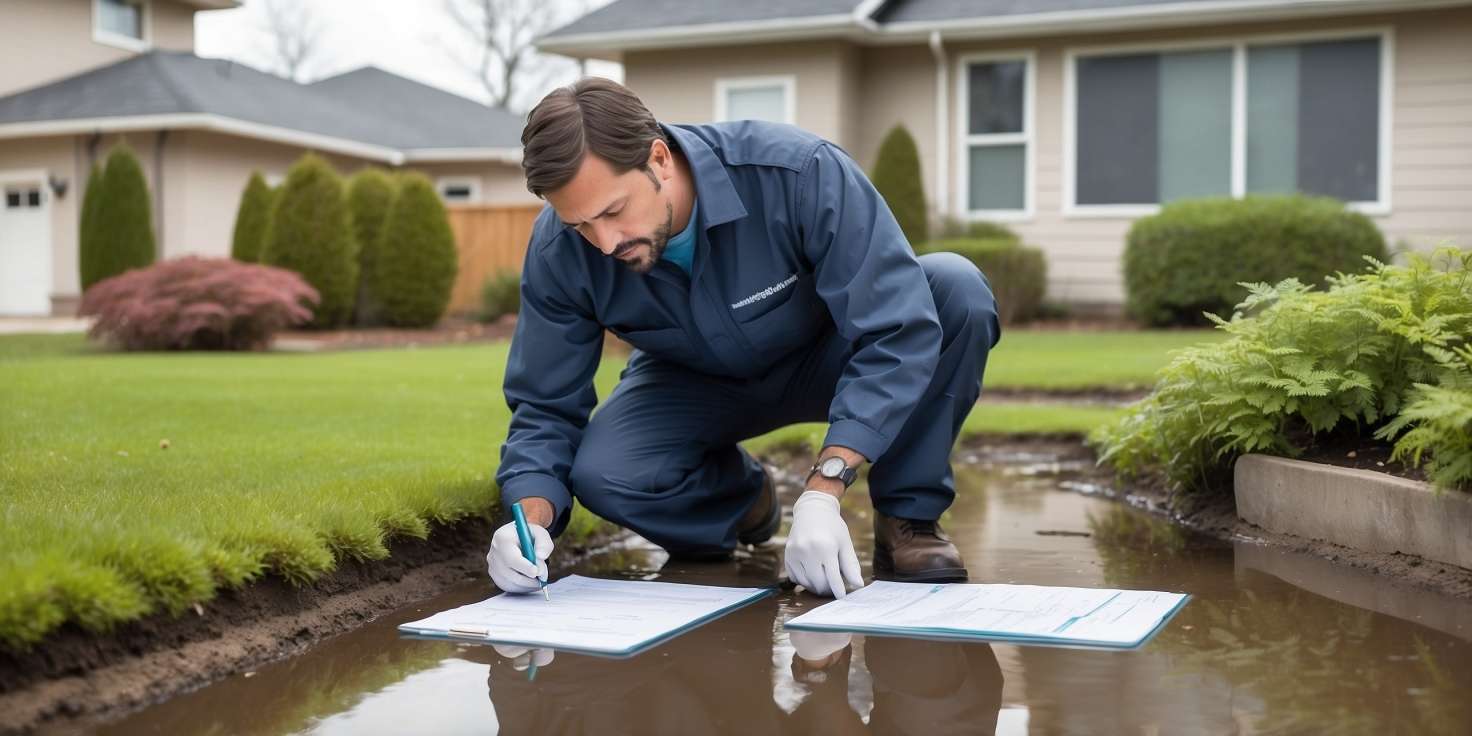Water damage from landscaping is a common yet often overlooked issue that can lead to costly repairs and long-term structural problems if not addressed properly. Whether it’s improper drainage, overwatering, or poorly graded soil, your yard’s design can significantly impact your home’s foundation and overall safety. At COMMITTED TO QUALITY SERVICE, we understand the importance of protecting your property from preventable damage. Our team offers fast, friendly, and professional service to help homeowners avoid the pitfalls of water intrusion. With our specialized water damage restoration equipment and expertise, we ensure your home stays dry and secure. If you’re looking to prevent water damage from landscaping, it’s essential to understand the causes and implement effective solutions. Call us now at 855-933-7935 to learn more about how we can help safeguard your home. Don’t wait until it’s too late—protect your investment with expert advice and reliable service.
Understanding the Link Between Landscaping and Water Damage
Landscaping plays a crucial role in enhancing the aesthetic appeal and functionality of a property, but it can also be a hidden contributor to water damage if not properly planned and maintained. Many homeowners overlook the connection between their yard’s design and the structural integrity of their home. However, improper landscaping can lead to significant water intrusion issues, especially during heavy rainfall or snowmelt. Understanding how landscaping affects water flow and drainage is essential to preventing costly damage to your home’s foundation, basement, and other vulnerable areas.
One of the most common ways landscaping contributes to water damage is through poor grading. When the ground around a home slopes toward the structure instead of away from it, water naturally flows toward the foundation. Over time, this can lead to foundation cracks, basement flooding, and even structural instability. According to the Federal Emergency Management Agency (FEMA), “Improper grading is one of the leading causes of water damage in residential properties.”
Another critical factor is the placement of plants, trees, and shrubs. While greenery adds beauty and shade, planting too close to the home can cause problems. Tree roots can disrupt underground drainage systems and even crack foundations. Additionally, dense vegetation can trap moisture against the exterior walls, promoting mold growth and wood rot. This is particularly concerning in regions with high humidity or frequent rainfall.
“The key to preventing water damage from landscaping is to manage water flow effectively and ensure proper drainage away from the home.”
Hardscaping elements like patios, walkways, and driveways can also contribute to water issues if they are not designed with drainage in mind. Impermeable surfaces prevent water from soaking into the ground, leading to runoff that can pool near the foundation. Installing permeable pavers or incorporating drainage channels can help mitigate this risk.
Here are some common landscaping mistakes that often lead to water damage:
- Improper grading that directs water toward the home
- Planting trees or shrubs too close to the foundation
- Using non-permeable materials for walkways and patios without adequate drainage
- Neglecting to clean and maintain gutters and downspouts
- Failing to install or maintain a proper drainage system
To avoid these issues, it’s important to work with professionals who understand both landscaping and water management. Regular inspections and maintenance can also help identify potential problems before they escalate. For example, checking for pooling water after a storm or inspecting the slope of your yard can reveal early warning signs of drainage issues.
If you suspect water damage or want to learn more about how to protect your home, consider exploring our detailed guide on how to identify hidden water damage early. This resource provides valuable insights into spotting subtle signs of moisture problems before they become major repairs.
Additionally, our team at Projekt Restoration offers a range of services designed to help homeowners address and prevent water damage. From professional assessments to full-scale restoration, we are committed to protecting your property from the inside out.
According to the Environmental Protection Agency (EPA), “Proper landscaping can reduce runoff and erosion, improve water quality, and protect your home’s foundation.” This highlights the importance of integrating sustainable landscaping practices that not only beautify your property but also safeguard it from water-related issues.
For more expert advice and practical tips, visit our regularly updated blog, where we cover a wide range of topics related to home maintenance, water damage prevention, and restoration solutions.
In conclusion, landscaping is more than just an aesthetic choice—it’s a functional component of your home’s defense against water damage. By understanding the link between your yard’s design and potential moisture issues, you can take proactive steps to protect your investment and maintain a safe, dry living environment.
Grading Your Yard for Proper Drainage
One of the most effective ways to prevent water damage from landscaping is to ensure your yard is properly graded. Yard grading refers to the process of shaping the land around your home to direct water away from the foundation. When done correctly, it helps prevent water from pooling near your house, which can lead to serious issues such as foundation cracks, basement flooding, and mold growth. A properly graded yard should slope away from your home at a minimum of 5 percent, or about six inches over the first ten feet. This subtle incline is enough to guide rainwater and runoff away from your structure, reducing the risk of water infiltration. Poor grading, on the other hand, can cause water to collect near your foundation, eventually seeping into your home and causing costly damage. If you notice standing water after a rainstorm or damp spots near your foundation, it may be time to evaluate your yard’s grading.
To assess your yard’s slope, you can use a long level and a measuring tape or consult a landscaping professional. If regrading is necessary, soil may need to be added or removed to create the proper slope. In some cases, installing a French drain or swale can help redirect water more effectively. These drainage solutions work in tandem with grading to ensure water flows away from your home, not toward it. Additionally, it’s important to maintain your yard’s grading over time. Natural erosion, heavy rainfall, and landscaping changes can alter the slope, so regular inspections are essential. Keeping your gutters and downspouts clear and directing them away from the foundation also supports proper drainage. For homeowners looking to protect their property from water damage, understanding the importance of yard grading is a crucial first step. It not only safeguards your home’s structural integrity but also enhances the overall health of your landscape.
If you’re unsure about how to properly grade your yard or suspect existing drainage issues, it’s wise to seek professional assistance. At Projekt Restoration, we offer a range of services designed to help homeowners prevent and address water damage effectively. Our team can evaluate your property and recommend the best solutions tailored to your specific needs. You can also learn more about our approach and values by visiting our mission page. Taking proactive steps now can save you from costly repairs and ensure your home remains safe and dry for years to come.
Choosing the Right Plants to Prevent Soil Erosion
Selecting the appropriate vegetation for your landscape plays a crucial role in preventing soil erosion, which is a major contributor to water damage around homes and buildings. Plants with deep, fibrous root systems help anchor the soil, reducing runoff and keeping moisture levels balanced. Ground covers like creeping juniper, periwinkle, and native grasses are excellent choices for sloped areas, as they spread quickly and form a dense mat that holds the soil in place. Shrubs and trees such as willow, dogwood, and red osier are also effective, especially near water-prone zones, because their roots stabilize the ground and absorb excess water. When planning your landscaping, it is essential to consider the local climate, soil type, and sun exposure to ensure the plants you choose will thrive and provide long-term erosion control. Native plants are often the best option, as they are adapted to the local environment and require less maintenance and water. In addition to their functional benefits, these plants can enhance the aesthetic appeal of your yard while supporting local biodiversity. Incorporating mulch and organic matter around plant bases can further improve soil structure and water retention, reducing the risk of erosion. For homeowners looking to protect their property from water damage, understanding the importance of plant selection is a proactive step. If you’re unsure where to begin, consulting with a landscaping or restoration expert can help you make informed decisions tailored to your specific needs. To learn more about how landscaping choices impact water damage prevention, visit our blog or explore our wide range of services. By integrating the right plants into your landscape design, you not only safeguard your property but also contribute to a healthier and more sustainable environment.
Installing Drainage Systems to Redirect Water Flow
One of the most effective ways to prevent water damage caused by landscaping is by installing proper drainage systems that redirect water flow away from your home’s foundation. Without adequate drainage, excess rainwater or irrigation runoff can accumulate around your property, leading to soil erosion, basement flooding, and long-term structural damage. A well-designed drainage system ensures that water is channeled safely away from vulnerable areas, protecting both your landscape and your home. There are several types of drainage solutions available, including French drains, surface drains, and dry wells, each tailored to specific property needs. French drains, for example, are ideal for areas with poor soil drainage and work by collecting water through a perforated pipe surrounded by gravel. Surface drains, on the other hand, are effective in quickly removing water from hardscaped areas like patios and driveways. When planning a drainage system, it is crucial to assess the slope and grading of your yard. The ground should naturally slope away from your home to encourage water to flow outward rather than pooling near the foundation. If your yard is flat or slopes toward the house, regrading may be necessary to correct the issue. Additionally, integrating gutters and downspouts with extensions can help direct roof runoff away from the base of your home. For homeowners unsure about the best drainage solution, consulting with a professional can provide valuable insights and customized recommendations. At Projekt Restoration, we offer a range of services designed to protect your property from water-related issues. Our team can assess your landscape and implement the most effective drainage system to suit your needs. Proper drainage not only prevents water damage but also enhances the health of your plants and lawn by preventing root rot and soil compaction. For more information on how we can help safeguard your home, visit our about page to learn more about our expertise and commitment to quality. Taking proactive steps to manage water flow through strategic drainage installation is a smart investment in the longevity and safety of your property.
Maintaining Gutters and Downspouts Around Landscaping
Proper maintenance of gutters and downspouts is essential in preventing water damage that can stem from landscaping. These components play a critical role in directing rainwater away from your home’s foundation, which is especially important when landscaping features like flower beds, mulch, or decorative stones are placed near the perimeter of your house. When gutters become clogged with leaves, twigs, or debris, water can overflow and saturate the soil around your foundation. This excess moisture can lead to structural issues, basement flooding, or even mold growth. Regularly cleaning your gutters, especially during the fall and spring seasons, ensures that water flows freely through the system and is directed safely away from your home.
In addition to cleaning, it’s important to inspect your gutters and downspouts for any signs of damage or misalignment. Cracks, rust, or sagging sections can compromise the system’s effectiveness, allowing water to leak directly into your landscaping and potentially seep into your home. Downspouts should extend at least five to ten feet away from the foundation to prevent pooling water. If your landscaping design includes slopes or retaining walls, make sure the water is being directed downhill and away from these structures to avoid erosion or water buildup. Installing gutter guards can also help reduce the frequency of clogs and make maintenance easier over time.
Another key aspect is integrating your gutter system with your landscaping design. For example, using splash blocks or downspout extenders can help channel water into designated drainage areas or rain gardens, which not only protect your foundation but also enhance the aesthetic and ecological value of your yard. French drains or dry wells can also be incorporated to manage runoff more effectively. These solutions are particularly useful in areas with heavy rainfall or clay-rich soil that retains water. Ensuring that your landscaping supports proper drainage will significantly reduce the risk of water damage.
Homeowners should also be aware of the signs of water damage that may result from poor gutter maintenance. These can include water stains on exterior walls, peeling paint, or damp spots in basements and crawl spaces. If you notice any of these issues, it may be time to consult a professional. At Projekt Restoration, we offer a range of services designed to help homeowners identify and address water damage before it becomes a major problem. Our team can assess your gutter system and recommend improvements that align with your landscaping layout.
For those interested in learning more about how water damage can affect your home and what steps to take, our detailed blog provides valuable insights and practical tips. We also encourage homeowners to explore our about page to understand our commitment to quality and customer satisfaction. By staying proactive with gutter and downspout maintenance, you can protect your home from costly repairs and maintain the beauty and functionality of your landscaping.
Using Mulch and Ground Cover Wisely
Mulch and ground cover are essential components of a well-maintained landscape, but when used improperly, they can contribute to water damage around your home. Understanding how to use these materials wisely can help you protect your property from excess moisture and the costly repairs that often follow. One of the most important considerations when applying mulch is its placement. Mulch should never be piled directly against the foundation of your home. Doing so can trap moisture against the structure, leading to potential seepage into basements or crawl spaces. Instead, leave a gap of at least six inches between the mulch and your home’s exterior walls. This allows for proper air circulation and reduces the risk of water infiltration.
The type of mulch you choose also plays a significant role in water management. Organic mulches like wood chips, bark, or straw are popular for their aesthetic appeal and soil-enhancing properties. However, they can retain a significant amount of moisture, which may be problematic if drainage is poor. In areas prone to heavy rainfall or where the soil does not drain well, consider using inorganic mulches such as gravel or rubber. These materials do not absorb water and can help direct runoff away from your home’s foundation.
Ground cover plants are another effective way to manage water in your landscape. These low-growing plants help stabilize soil, reduce erosion, and absorb excess rainwater. However, it’s important to choose the right species for your climate and soil type. Native ground covers are typically the best choice, as they are adapted to local conditions and require less maintenance. When planting ground cover near your home, ensure that the soil slopes away from the foundation. This simple grading technique encourages water to flow away from the structure, minimizing the risk of water damage.
Proper installation and maintenance of mulch and ground cover are crucial. Over time, mulch can decompose and compact, reducing its effectiveness. Refreshing mulch annually and checking for signs of water pooling can help maintain its protective benefits. Similarly, ground cover should be trimmed and managed to prevent overgrowth, which can block drainage paths and trap moisture.
Incorporating these landscaping practices into your overall water damage prevention strategy can make a significant difference. If you suspect that your current landscaping may be contributing to moisture issues, it may be time to consult with professionals. At Projekt Restoration, we offer a range of services designed to help homeowners identify and address potential water damage risks. Our team can assess your property and recommend solutions tailored to your specific needs.
For those interested in learning more about how landscaping choices impact home safety, our blog provides valuable insights and practical tips. Whether you’re dealing with existing water damage or looking to prevent future issues, understanding the role of mulch and ground cover is a key step in protecting your investment. By using these materials wisely, you can enhance your landscape’s beauty while safeguarding your home from the hidden dangers of water intrusion.
Regular Landscaping Maintenance to Avoid Water Issues
Maintaining your landscape regularly is one of the most effective ways to prevent water damage around your property. Over time, even the most well-designed landscaping can contribute to water issues if not properly cared for. For instance, clogged drains, overgrown vegetation, and compacted soil can all disrupt the natural flow of water, leading to pooling, erosion, and eventually, damage to your home’s foundation or basement. Regular upkeep ensures that water is directed away from your home, reducing the risk of leaks, mold growth, and structural deterioration.
One of the key aspects of landscape maintenance is ensuring that your drainage systems remain clear and functional. Gutters and downspouts should be inspected and cleaned frequently to prevent blockages that can cause water to overflow and seep into your home. Similarly, French drains, swales, and other drainage features must be kept free of debris and sediment. When these systems are neglected, water can accumulate in unwanted areas, increasing the likelihood of water intrusion and long-term damage.
Another important factor is the condition of your soil. Over time, soil can become compacted, especially in high-traffic areas, reducing its ability to absorb water. This can lead to surface runoff and erosion, which may direct water toward your home instead of away from it. Aerating the soil and adding organic matter can improve its permeability, allowing water to soak in gradually rather than pooling on the surface. Additionally, maintaining a healthy lawn and garden with proper grading helps ensure that water flows in the right direction.
Vegetation management also plays a crucial role in preventing water damage. Trees and shrubs planted too close to your home can cause issues in multiple ways. Their roots may interfere with underground drainage systems or even the foundation itself, while overhanging branches can clog gutters with leaves and debris. Regular pruning and strategic planting help mitigate these risks. Choosing native or drought-resistant plants can also reduce the need for excessive watering, which can contribute to water accumulation if not properly managed.
Mulching is another simple yet effective maintenance practice. A well-applied layer of mulch helps retain soil moisture, reduce erosion, and prevent the growth of weeds that can disrupt the landscape. However, it’s important not to over-mulch or pile it too close to the foundation, as this can trap moisture and lead to water damage. Keeping mulch at a safe distance from your home’s exterior walls allows for proper air circulation and drainage.
Incorporating regular inspections into your landscaping routine can help identify potential issues before they become serious problems. Look for signs of poor drainage, such as standing water, soggy soil, or water stains on your foundation. Addressing these early can save you from costly repairs down the line. If you’re unsure about what to look for, consider consulting a professional who specializes in water damage prevention. You can learn more about our services and how we help homeowners protect their properties from water-related issues.
It’s also beneficial to stay informed about the best practices for landscape maintenance and water damage prevention. Our blog offers valuable insights and tips to help you maintain a safe and efficient outdoor environment. Whether you’re dealing with heavy rainfall, irrigation challenges, or seasonal changes, consistent care and attention to your landscape can make a significant difference in protecting your home.
Ultimately, regular landscaping maintenance is not just about aesthetics—it’s a proactive approach to safeguarding your property. By keeping your yard in good condition, ensuring proper drainage, and managing vegetation wisely, you can significantly reduce the risk of water damage. Taking the time to maintain your landscape today can prevent major headaches and expenses in the future.
In conclusion, preventing water damage from landscaping requires thoughtful planning, regular maintenance, and a proactive approach to managing water flow around your property. By grading your yard properly, installing effective drainage systems, choosing the right plants, and maintaining gutters and downspouts, you can significantly reduce the risk of water-related issues. Remember, a well-designed landscape not only enhances your home’s curb appeal but also protects its structural integrity. Taking the time to implement these preventative measures today can save you from costly repairs and headaches in the future.

